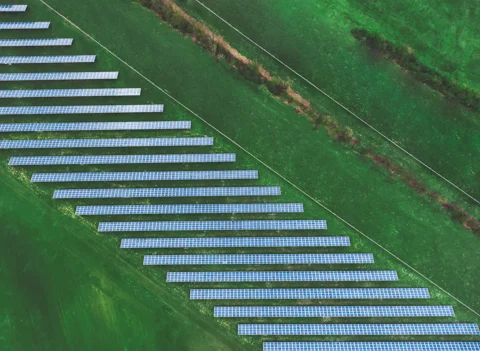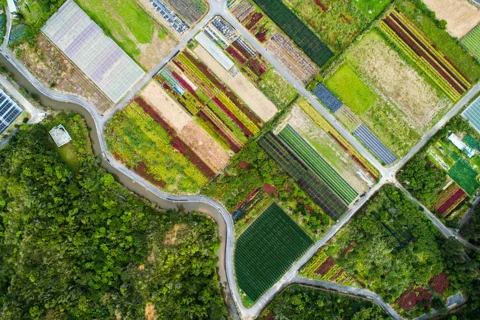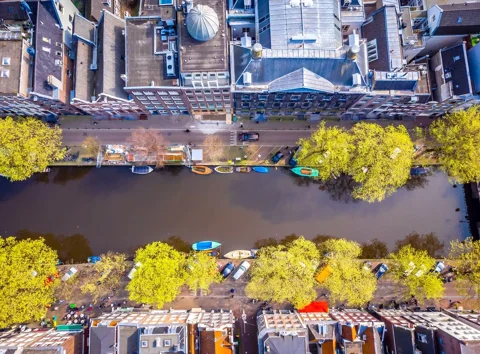Pension to many people is something for (the day after) tomorrow. It is a fact that the pension system is about to change. But how will our society develop in the years to come? What will the Netherlands of tomorrow look like? We ask people from a cross-section of society. In this first edition: Katja Staartjes, the first Dutch woman ever to climb the Mount Everest.
The Netherlands 2020: more than seventeen million people are gathered together in a figurative tent in the base camp. We are at the beginning of a joint expedition to the top of the mountain: the Netherlands of the day after tomorrow. For the time being, that top is still clothed in mist, although we are sometimes able to see the contours. What social changes will we go through in the next fifteen years and what type of leadership do we need on our way to the Netherlands of the future? Cooperation in particular becomes increasingly important, according to Katja Staartjes. She climbed a number of eight thousands, mountains with an altitude of more than 8,000 meters. In addition, she has extensive experience as an (interim) manager and she is also a trainer, coach and writer. The title of her latest book: Topteams. Samen bergen verzetten (Top teams: moving mountains together, ed.).
How you do perceive the Netherlands of the future: what do you think you will find at the top of the mountain?
“I see two core developments. One: the need for sustainability, to halt the depletion of the earth’s resources. Two: a growing need for inclusiveness, for being open to differences and for creating solidarity. Climate change and political unrest lead to a flow of refugees. Besides that, we witness division in society: between different cultures, between the disadvantaged and the advantaged. We must find a way to close the gap between those intensified opposites. And we are also right in the middle of the corona crisis.”
Uncertain times you might say. What type of leadership does this require?
“First of all: make sure the basics are in order. That offers footing in times of uncertainty and change. Not enough gear during a climb may cause major problems. Without a rope attached to my glove, it may fall into the depth and my hand could freeze. The tiniest forgotten detail can save lives or actually cause fatalities. Think about the lack of face masks in the care institutions during the corona crisis. But if you carry too much gear going to the top, your backpack becomes too heavy which is slowing you down.”
Dead weight, while in times of change you should be agile?
“Exactly, agility is starting point number two. High on a mountain, the weather could suddenly change or unexpected obstacles arise, such as crevasses and ice walls. We often believe that everything is feasible, we try to hedge every risk. But without taking any risks, you will never make it to the top. This means we have to let go, improvise, accept the fact that things can go wrong and show resilience in times of setbacks. The third starting point: Less is more. The conception of progress has led to a stalemate on our planet. We have to think and do more in terms of sustainability: set limits to the growth, go back to the essence and think and act more in the long term.”
What can we learn from mountain climbing in that respect?
“If you want to get to the top too quickly during a climb, signs of altitude sickness will arise due to the thin air and you could even die. It is with good reason that an altitude of 7,500 meters or more is called the Death Zone. In order to get used to the lack of oxygen, we climb in stages and go a bit higher every time. We return to the base camp in between to recover. We sometimes refrain from going to the top if the risks are too high. And if we do make it to the top, we still have to descent. Just as in daily life: you can cheer because you closed a megadeal, but you have only reached your goal if the client is satisfied and your product is not harming the environment. It is all about sustainable and shared results.”
What characteristics of leaders will become more important?
“Uncertainty calls for strong leadership: someone who is not just talking but also takes action and who has the guts to make tough decisions, liking daring to stop a non-sustainable activity or bureaucratic hassle. The common interest is guiding, not the own ego: servant leadership. A leader who is able to enthuse people for a mutual goal and the direction chosen. Because you have to ensure that everyone in the team wants to climb the same mountain and takes the same path. Especially now working from home seems to become the standard because of the corona crisis and digitalization. A good leader is able to also inspire and connect people from a distance and exudes confidence. The same applies to climbing, when you are hanging on a rope together on a steep mountain cliff and are unable to see each other.”
Working together as if your life depends on it?
“Literally, yes. It also means good communication. We often agree on signs during climbing, such as: two pulls of the rope means ‘safe’. In order to realize effective teamwork it helps to reinforce the weakest link: if someone is struggling to keep up, reduce the weight of his or her backpack and let someone else take the lead in deep snow. That way you move on faster together. That necessity for more and better cooperation does not only apply to teams, but also within companies. And beyond, with increasingly complex collaborations.”
Why is that so important?
“Challenges such as the energy transition are too big to handle on your own. We need each other, especially in the future, and a sense of community and solidarity is becoming more important again. That also applies to pension: even though the system changes, we still have to continue to take care of one another as a society. Effective teams are diverse which brings me back to that inclusiveness. It doesn’t make the cooperation any easier, but the final result will be better. Even though there are differences, having a common goal makes you all want to reach that top. The key is mutual respect. Future-proof leadership means that you also want others to succeed, to show exemplary behavior, to be honest: only claim that you reached the top if you actually did. These are timeless truths that are more topical than ever.”



